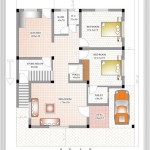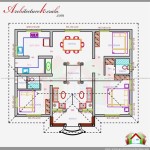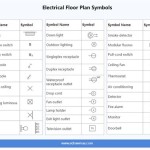Plans And Elevations Of Houses: Essential Aspects
When it comes to designing a house, plans and elevations are two of the most important aspects to consider. Plans and elevations are both important because they provide a visual representation of what the house will look like once it is built. Plans and elevations can also help to ensure that the house is structurally sound and meets all of the necessary building codes. Plans and elevations are two important aspects of house design that should be considered carefully before construction begins.
Plans are two-dimensional drawings that show the layout of a house. They typically include details such as the location of rooms, walls, windows, and doors. Plans can also include information about the size of the house, the materials that will be used, and the overall design of the house. Plans are essential for ensuring that the house is structurally sound and meets all of the necessary building codes.
Elevations are also two-dimensional drawings, but they show the exterior of the house. They typically include details such as the shape of the house, the type of siding that will be used, and the location of windows and doors. Elevations can also include information about the overall design of the house and the style of architecture that will be used. Elevations are important for ensuring that the house has a cohesive design and that it meets all of the necessary aesthetic requirements.
When it comes to designing a house, it is important to consider both plans and elevations. Plans are essential for ensuring that the house is structurally sound and meets all of the necessary building codes. Elevations are important for ensuring that the house has a cohesive design and that it meets all of the necessary aesthetic requirements. By considering both plans and elevations, you can ensure that your house is both beautiful and functional.
Here are some additional tips for creating plans and elevations for your house:
- Start by creating a rough sketch of your house. This will help you to get a general idea of the layout and design of your house.
- Once you have a rough sketch, you can start to create more detailed plans and elevations. Use a ruler and a protractor to ensure that your drawings are accurate.
- Be sure to include all of the necessary details in your plans and elevations. This includes information such as the location of rooms, walls, windows, doors, and other features.
- Once you have finished your plans and elevations, have them reviewed by a professional. This will help to ensure that your plans are accurate and that your house meets all of the necessary building codes.
By following these tips, you can create plans and elevations that will help you to build a beautiful and functional house.

Architecture House Plan And Elevation Complete Drawing Cadbullb Bungalow Floor Plans

Floor Plan Elevation Sample House Plans Building

How To Read House Plans Elevations

How To Read House Plans Floor Building In 10 Minutes Archid

Floor Plan And Elevations For The New House Wildfire Interiors

Floor Plans House Layout

What Are Elevations Building Design House

Elevation Design Drawing Of House Building Plan

How To Read House Plans Elevations
Colonial Ranch House Plan 3 Bdrm 2097 Sq Ft The Collection








